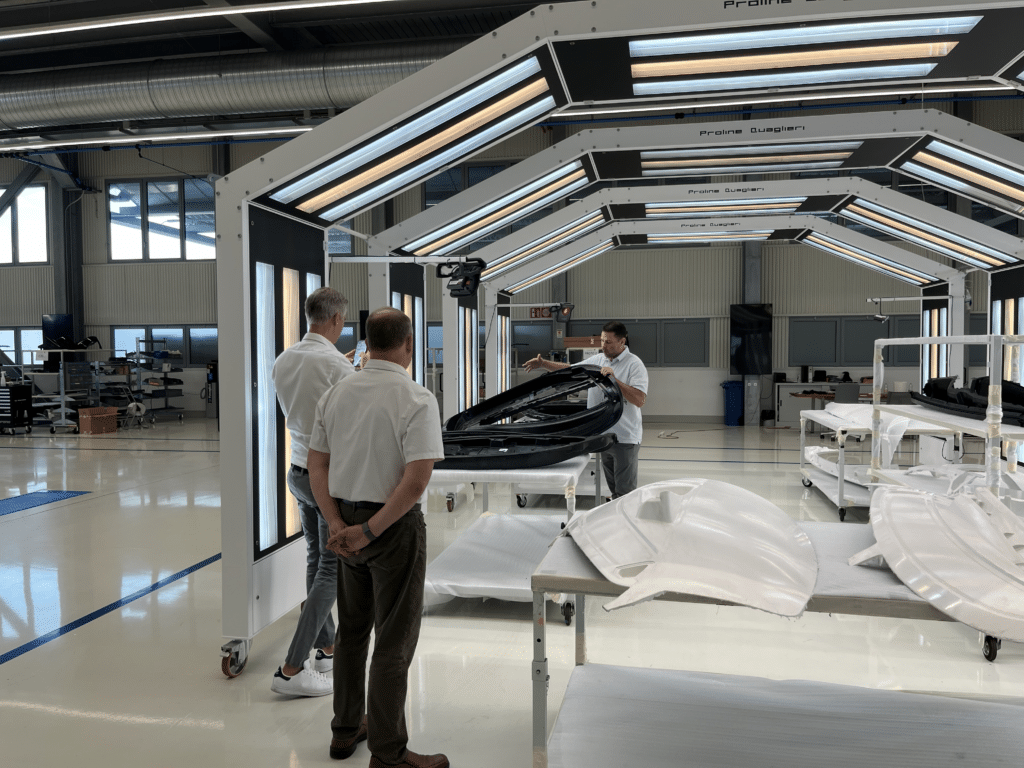
Aptera’s Solar Electric Vehicle: The Validation Phase
Earlier in the year, Aptera initiated the Validation Phase for its aerodynamically designed shape within the renowned wind tunnel at Pininfarina. This significant step is just one part of a comprehensive process to ensure the solar electric vehicle meets the high standards required for production. This article provides a glimpse into the Validation Phase, detailing its purpose, importance, and the structured timeline that paves the way for the production of a dependable and safe solar-powered electric vehicle (EV). Let’s first take a look at the developmental milestones that have brought Aptera to this crucial juncture.
Developmental Milestones Preceding the Validation Phase:
- Concept and Ideation
- Design and Engineering
- System Development
- Computational Fluid Dynamics (CFD) Simulation and Modeling
- Prototyping and Vehicle Dynamics Testing
- Solar Testing and Low-Volume Production
- Supplier Selection and Sourcing
- Manufacturing Planning
Critical Steps in the Validation Phase
- Production of Long Lead Time Tools: Aptera has announced that over 60% of the vital equipment and tools required for creating the Body in Carbon (BinC) have been completed and commissioned. These tools, which include stamping dies and post-process tooling, apply up to 5,000 tons of force to shape carbon fiber-SMC into the vehicle’s body parts. These tools are pivotal due to their lengthy production lead times and significant capital investment, which are higher than those for other vehicle components.
- Production and Validation of Parts: Using the aforementioned stamping dies and tooling, the body parts for the production-intent builds (PI builds) are currently being stamped. These PI builds are prototypes that closely resemble and perform like the final production vehicles. Each part undergoes a meticulous validation process, including inspections for thickness and surface tolerance using a Coordinate Measuring Machine (CMM). Parts that pass the validation bear green stickers and are approved for use in PI builds.
- Bonding of Body Parts: After validating each of the six main components of the Aptera body, they are bonded together to form the complete BinC. This assembled structure is then validated again to ensure the body closures meet tolerance specifications.
- Progress Builds and Production-Intent Builds: Following the bonding of body parts to create the BinC, the journey continues with the assembly of the full PI build. This process starts by connecting the front and rear subframes with the structural battery pack and integrating this assembly with the BinC. The vehicle then progresses through the remaining assembly steps. The initial vehicles are progress builds, gradually incorporating more production-intent components, eventually leading to full PI builds with all production parts made with the final equipment and tooling.
- Testing and Validation of PI Builds: During this phase, PI builds are subjected to rigorous testing, focusing on key components such as suspension and dampeners for ride comfort, brake systems for precise stopping power, airbag calibration for safety, thermal system efficiency for diverse climates, powertrain and battery durability, and software integration for a seamless driving experience.
- Safety and Crash Testing: Safety and crash testing are paramount in the validation process. PI builds undergo extensive assessments to ensure regulatory compliance, maintain the highest manufacturing standards, and validate vehicle durability and reliability. This phase also includes tuning efforts to enhance efficiency and safety, as well as a series of real-world scenario tests to ensure passenger protection and vehicle integrity.
- Manufacturing Validation: The manufacturing validation phase focuses on the production systems, ensuring that the manufacturing of the solar EVs adheres to the highest standards of efficiency and quality. This involves fine-tuning and testing production equipment and assembly lines to refine manufacturing processes and ensure precision in the final product.
- Start of Production and First Deliveries: The culmination of Aptera’s journey leads to the start of production and the first deliveries. This milestone represents the dawn of a new era in sustainable mobility. The keys to the first 2,000 vehicles will be handed over to the Accelerators, the early supporters of a more sustainable future. There is still a chance to be among the first 2,000 owners, with real-time updates available on the company’s website header. Investors contributing $10,000 or more before the 2,000th slot is filled will be among the first to receive an Aptera vehicle, complete with commemorative and serialized markings.
Through the rigorous Validation Phase, Aptera is dedicated to delivering a solar-electric vehicle that brings us closer to a future where every journey is powered by the sun. The company invites enthusiasts and supporters to continue following their progress.
